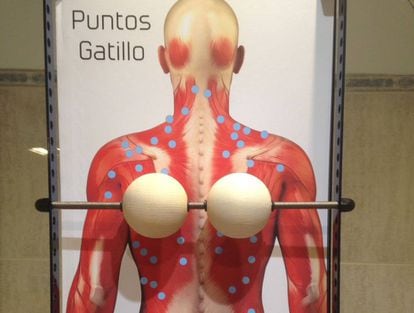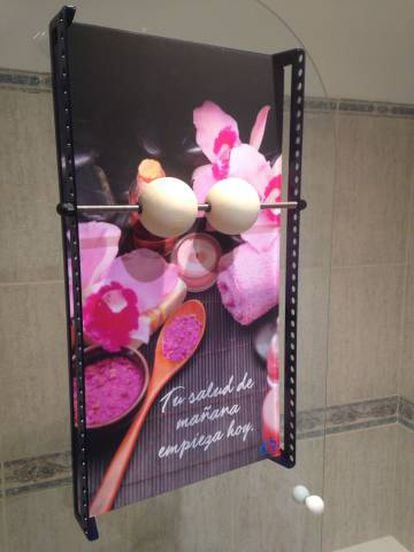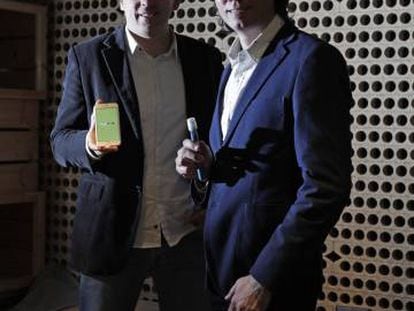A rod for your own back? Spaniard invents new massage tool
Simple device consisting of a bar and two wooden balls wins prize but effectiveness is questioned by specialists

A Spaniard who suffers from chronic back pain has come up with a simple but effective device he claims works miracles in helping relax muscles, but that has raised the hackles of Spain’s physical therapist association.
Increasing numbers of people spend hours sitting in front of a computer, while many of us have to endure stress or have bad posture, while many others work in jobs that require hard labor, meaning that in Spain, around 80% of the population will suffer from a bad back at some point in their lives. In 30% of cases, the pain will be endured for long periods of time, according to data collected by the European Health Survey for Spain.
The money spent on researching these types of gadgets is a cause for concern Javier Porrero Soriano, the director of Spain’s General Council of Physical Therapy Schools
Now, Roberto Baztán Pagola, a 51-year-old from the northern Spanish region of Navarre, has patented a device he says provides a simple and quick end to the muscular contractions that can leave our backs knotted with pain. His invention consists of two wooden spheres run through with a rod that sufferers can roll up and down the back to relax muscles.
Baztán was chosen by the European Center of Innovation for Navarre to participate in Impulso Emprendedor, a start-up accelerator program. Sponsored by Spanish engineering company USCAL, Baztán was granted €8,000 and all the necessary technology to develop his project.
A gravity-defying method
Baztán says he got the idea after his doctor offered a partial solution. “I worked in the automotive world and suffered from muscle aches. When I went to a physical therapist I was advised to take a tennis ball and hold it against the wall with my back moving in circles to massage the muscle. I gave it a try but it was uncomfortable and the ball kept dropping,” said Baztán.
Baztán has already contacted potential suppliers for his product and is waiting for a certification to authorize his device to be used for rehabilitation by physical therapists. Once he obtains that, he can begin to market his product. The entrepreneur stresses that his device is to be used exclusively for treating muscle-related problems and does not solve other issues related to the spine, such as hernias or scoliosis.

Leaving aside production and delivery costs, the device would be priced at around €130, depending on whether it is motorized or manual: in recent months, Baztán has been looking into integrating a motor to the device.
Physical therapists weigh in
But some specialists have dismissed Baztan’s idea as a worthless gadget: “When a physical therapist treats a patient, they diagnose the problem and based on that, they prescribe the technique they think appropriate.” explains Javier Porrero Soriano, the director of the General Council of Physical Therapy Schools in Spain. “This does not necessarily mean manual therapy. Assuming that this is the same as rolling two wooden balls reflects a profound misunderstanding of physical therapy.
“What is most worrying is that this invention was chosen for the Impulso Emprendedor program by the European Center of Innovation for Navarre,” Porrero continues. “First of all, this is not a novel idea since there have been similar devices on the market for many years. In many stores that sell natural products, you can find massage balls for use on the back. Also, the controversial massage chair applies these same principles. Secondly, there is no scientific proof that the arbitrary application of wooden balls to the back has any health benefits. On the contrary, it could aggravate an injury.
“For this reason,” argues Porrero, “the money spent on researching these types of gadgets is wasteful, or at the very least a cause for concern.”
English version by Debora Almeida.












































